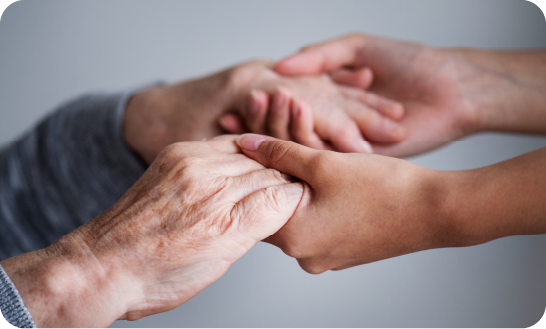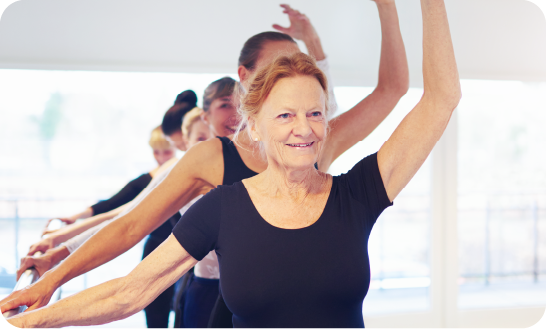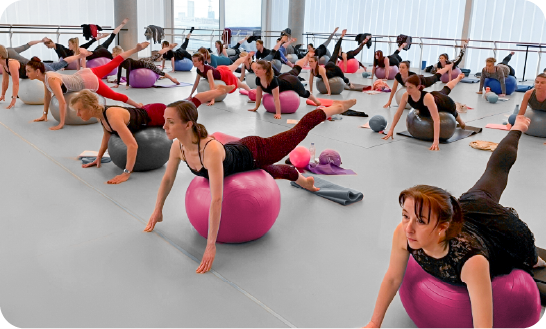The Resurgence of Adult Ballet Classes
In recent years, adult ballet classes have stepped into the fitness industry’s crowded spotlight. Today, having earned a reputation for boosting cognitive and physical health, adult ballet classes are taking centre stage.
Owing to their social and physical benefits, fitness classes have and will continue to attract a range of individuals from all walks of life. However, due to their intensity, these classes do not cater to every demographic. To support the needs of the older generation, a new, but frankly very old, activity is making its mark on the fitness stage: adult ballet classes.
From busy mums to retirees, adult ballet classes offer many benefits. Not only do adult dance classes cultivate elegant and poised artists but they can also play an extremely important role in mental and physical health. With dementia becoming an increasingly pressing concern for many families, it is important that ageing individuals prioritise their cognitive health.
Ballet and Brain Health

During adult ballet classes, dancers will be required to remember combinations, coordinate their movements, think on their feet, and move rhythmically. As a result, adult ballet classes play a key role in supporting and improving cognitive function. A recent study concluded by the New England Journal of Medicine discovered that dance could ‘decidedly improve brain health’. Brain functions, though sounding complex, work in much the same way as muscles. When left untrained and unused, areas of the brain weaken. Thankfully, just like damaged or weak muscles, they too can be strengthened through controlled and consistent exercise.
The motor cortex is the region of the brain that facilitates the planning, controlling and executing of voluntary movements. When dancers run, jump or twirl in their adult ballet classes they will be using all three functions. In this way, adult ballet classes offer individuals a chance to strengthen their motor cortex and increase brain plasticity (the brain’s ability to adapt and form new connections).
Those who have ever participated in an adult dance class will be familiar with the concept of imagining movements prior to performing them. Dancers may be asked to imagine a thread pulling their head to the ceiling or even a string knitting their abdominals together. When imagining a movement, dancers are actually using the same brain areas that are stimulated when performing the movement. Motor imagery, known more commonly as mental rehearsal, is often employed by dance teachers to help students understand the complexity of movements and engage certain muscles. In adult ballet classes, the dorsolateral prefrontal cortex (responsible for visualisation) works especially hard, tasked with turning an ordinary ballet studio into a world renowned stage.
A Spotlight on Parkinson’s Disease

Parkinson’s disease is increasing globally with 90,000 people diagnosed in the US alone every year. Though inconclusive, new findings from the National Institute for Health and Care Research (NIHR) suggests that ballet dancing could help alleviate symptoms of Parkinson’s disease.
Although there is still no existing cure for the disease, research has found that Parkinson’s develops slower in those who exercise. According to the NIHR, patients with Parkinson’s disease saw improvements in their pain, sleep and mood whilst taking adult dance classes. As pain is difficult to relieve in people with Parkinson’s, adult ballet classes could provide PD patients with the medicine they desperately require to reduce their non-motor symptoms.
Frankly, it would be misleading to suggest that adult ballet classes will fix or cure Parkinson’s disease. However, benefits such as improved balance, better coordination and increased control, could help slow the progression of Parkinson’s and afford people who live with the disease a better quality of life.
Benefits of Adult Ballet Classes

In addition to supporting motor functions and strengthening neuroplasticity, adult ballet classes can also help improve an individual’s emotional wellbeing.
In the case of older individuals, high intensity training and open fitness classes may be too taxing on their bodies. Fortunately, adult ballet classes enable dancers to stretch and strengthen in a safe and controlled manner. The progressive and structured nature of ballet classes supports the improvement of physical skills such as balance, strength and stamina at a sustainable pace.
Attending adult ballet classes also affords older dancers a chance to socialise and interact with like-minded people. It is a cruel fact that as people age, they grow increasingly vulnerable to loneliness. In the case of elderly people, isolation can have a serious impact on their health and quality of life, with diseases such as Alzheimers disease and dementia proven to be linked to loneliness.
Fortunately, adult ballet classes offer elderly people a chance to escape their seclusion. During these classes, both the motor cortex and the sensory cortex are activated as dancers move in time to Tchaikovsky. Here, a combined stimulation of the brain’s reward centre and motor functions forms the perfect rope needed to hoist elderly individuals out of their depression and deterioration. Indeed, tying their ribbons and scraping their hair back into a bun, elderly dancers can immerse themselves in a world free of the aches and pains of everyday life.
How Can PBT Support Adult Ballet?

Although pink tights and a tight leotard is not a prerequisite for joining adult ballet classes, it is understandable that the first pointed-toe step into a studio is still a daunting one. More senior individuals may be concerned that they lack the strength or know-how to perform certain movements and may fear injury or even embarrassment. To help individuals feel more prepared prior to joining their adult ballet classes and to maximise the benefits of ballet alongside these classes, PBT has created a clear and effective supplementary training program.
PBT makes the benefits of ballet accessible to all. Adopting a structured and progressive approach to ballet training, PBT enables dancers to safely and mindfully strengthen their bodies and brains. As an organisation, Progressive Ballet Technique recognises the importance of pro-active injury prevention and safe learning for adult ballet dancers. With a mission to support dancers of all ages and help relieve anxieties pertaining to inexperience and injury, PBT focuses on enhancing muscle memory and training proper alignment. By strengthening adult dancers' confidence and condition, PBT plays a key role in helping new and experienced adult dancers enjoy the cognitive and physical benefits of ballet.
Key Takeaways
Whether eager to revisit a childhood dream or seeking an environment to swan about, adult ballet classes provide older dancers with a range of social, physical and mental benefits.
Owing to links between ballet and improved cognitive function, adult ballet classes have seen a strong resurgence. Far from a ‘get fit quick’ fad, adult ballet classes are a powerful tool in nourishing and strengthening ageing bodies and brains.
Sign up to our newsletter
Receive tips, news, and advice.